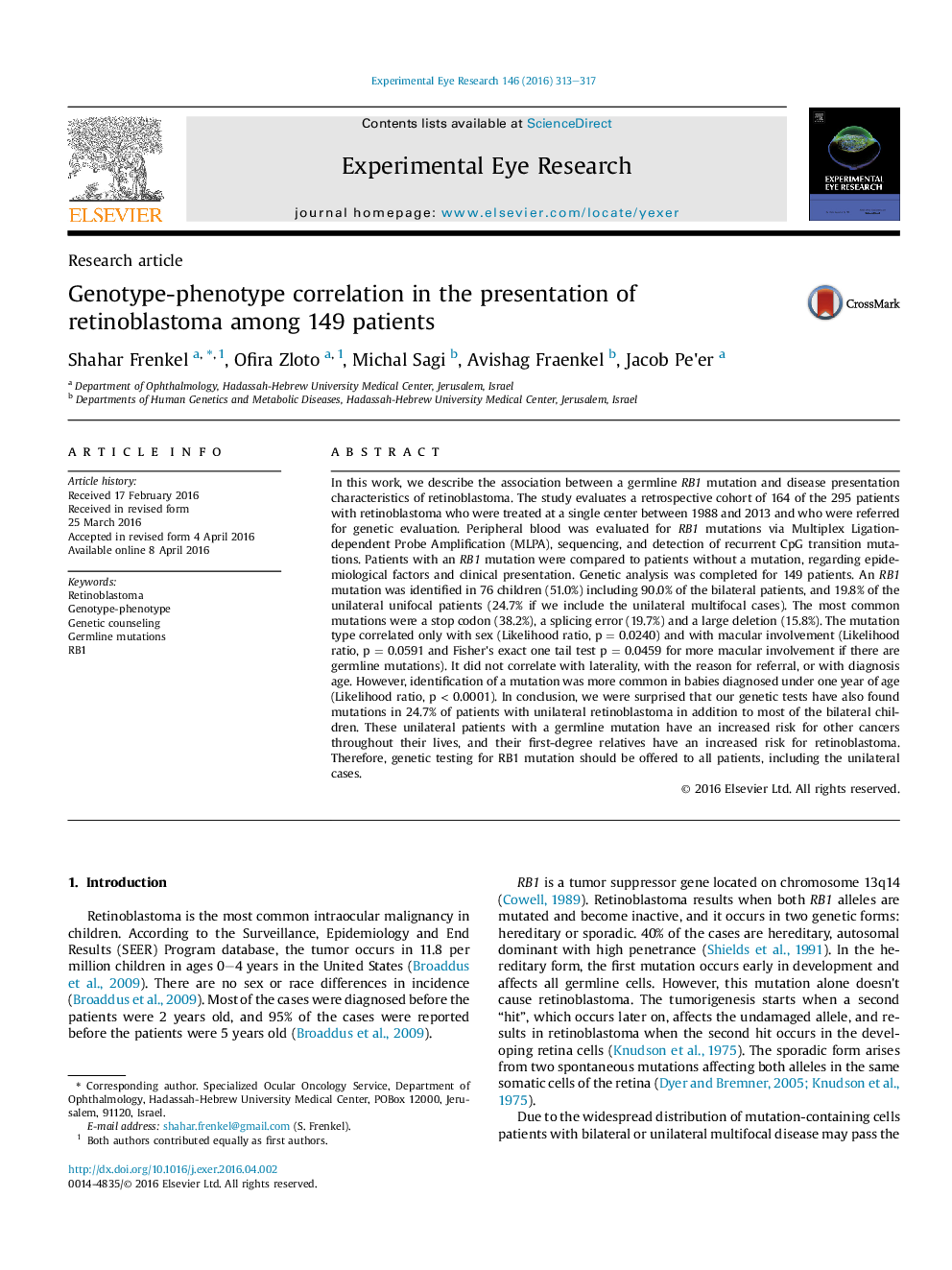| Article ID | Journal | Published Year | Pages | File Type |
|---|---|---|---|---|
| 6196326 | Experimental Eye Research | 2016 | 5 Pages |
â¢The association between a germline RB1 mutation and disease presentation is presented.â¢Germline mutations can be found in about 25% of unilateral cases.â¢Macular involvement increases the chance to identify a germline mutation.â¢Genetic counseling is recommended for all retinoblastoma patients.
In this work, we describe the association between a germline RB1 mutation and disease presentation characteristics of retinoblastoma. The study evaluates a retrospective cohort of 164 of the 295 patients with retinoblastoma who were treated at a single center between 1988 and 2013 and who were referred for genetic evaluation. Peripheral blood was evaluated for RB1 mutations via Multiplex Ligation-dependent Probe Amplification (MLPA), sequencing, and detection of recurrent CpG transition mutations. Patients with an RB1 mutation were compared to patients without a mutation, regarding epidemiological factors and clinical presentation. Genetic analysis was completed for 149 patients. An RB1 mutation was identified in 76 children (51.0%) including 90.0% of the bilateral patients, and 19.8% of the unilateral unifocal patients (24.7% if we include the unilateral multifocal cases). The most common mutations were a stop codon (38.2%), a splicing error (19.7%) and a large deletion (15.8%). The mutation type correlated only with sex (Likelihood ratio, p = 0.0240) and with macular involvement (Likelihood ratio, p = 0.0591 and Fisher's exact one tail test p = 0.0459 for more macular involvement if there are germline mutations). It did not correlate with laterality, with the reason for referral, or with diagnosis age. However, identification of a mutation was more common in babies diagnosed under one year of age (Likelihood ratio, p < 0.0001). In conclusion, we were surprised that our genetic tests have also found mutations in 24.7% of patients with unilateral retinoblastoma in addition to most of the bilateral children. These unilateral patients with a germline mutation have an increased risk for other cancers throughout their lives, and their first-degree relatives have an increased risk for retinoblastoma. Therefore, genetic testing for RB1 mutation should be offered to all patients, including the unilateral cases.
